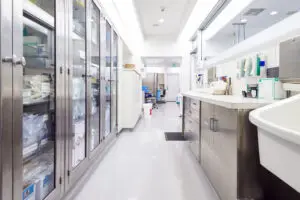Creativity is often associated with a free-flowing, unstructured approach. However, in a professional setting, a structured workflow is necessary for efficiency and productivity. So, how can you allow for creativity within a structured workflow?
In this article, we will explore the benefits of a structured workflow and provide tips on how to incorporate creativity into your daily routine.
The Importance of a Structured Workflow
A structured workflow is a methodical approach to completing tasks and projects. It involves breaking down a project into smaller, manageable steps and following a systematic approach to complete each step.
Increased Efficiency and Productivity
One of the main benefits of a structured workflow is increased efficiency and productivity. By breaking down a project into smaller tasks, you can focus on one task at a time and complete it more efficiently. This also helps to avoid feeling overwhelmed by a large project.
A structured workflow also allows for better time management. By setting specific deadlines for each task, you can prioritize your workload and ensure that all tasks are completed on time.
Better Organization and Communication
A structured workflow also promotes better organization and communication within a team. By breaking down a project into smaller tasks, it becomes easier to assign specific tasks to team members and track progress. This also helps to avoid confusion and miscommunication, as everyone knows their role and responsibilities.
Consistency and Quality Control
A structured workflow also promotes consistency and quality control. By following a systematic approach, you can ensure that each task is completed in the same way, leading to consistent results. This also allows for better quality control, as each task can be reviewed and improved upon before moving on to the next step.
How to Incorporate Creativity into a Structured Workflow
While a structured workflow is necessary for efficiency and productivity, it can also stifle creativity if not approached correctly. Here are some tips on how to incorporate creativity into your structured workflow.
Allow for Flexibility
One way to incorporate creativity into a structured workflow is by allowing for flexibility. While it is important to have a plan and follow a systematic approach, it is also important to be open to new ideas and approaches.
Allowing for flexibility means being open to change and adapting to new ideas or methods. This can lead to new and innovative solutions that may not have been considered in the initial plan.
Encourage Brainstorming Sessions
Brainstorming sessions are a great way to foster creativity within a structured workflow. These sessions allow team members to share their ideas and collaborate on solutions. By encouraging brainstorming sessions, you can tap into the creativity of your team and come up with new and innovative ideas.
Set Aside Time for Creative Thinking
In a structured workflow, it can be easy to get caught up in completing tasks and meeting deadlines. However, it is important to set aside time for creative thinking. This can be done individually or as a team.
During this time, encourage team members to think outside the box and come up with new ideas. This can lead to new approaches and solutions that may not have been considered before.
Embrace Failure
Failure is often seen as a negative outcome, but it can also be a valuable learning experience. In a structured workflow, it is important to embrace failure and see it as an opportunity for growth and improvement.
Encourage team members to take risks and try new things, even if they may not work out. This can lead to new and innovative solutions and foster a culture of creativity within the team.
Use Technology to Enhance Creativity
Technology can be a valuable tool for enhancing creativity within a structured workflow. There are many tools and software available that can help with brainstorming, idea generation, and collaboration.
For example, project management software can help with task management and organization, while design software can help with creating visual representations of ideas. By utilizing technology, you can enhance creativity and streamline the workflow process.
Real-World Examples of Creativity within a Structured Workflow
Many successful companies have found ways to incorporate creativity into their structured workflows. Here are a few examples:
Google’s 20% Time
Google is known for its innovative and creative approach to business. One of the ways they foster creativity within their structured workflow is through their “20% time” policy. This allows employees to spend 20% of their work time on projects outside of their regular job responsibilities.
This policy has led to the creation of many successful products, such as Gmail and Google Maps. By allowing employees to pursue their own interests and ideas, Google has fostered a culture of creativity and innovation.
Pixar’s Braintrust Meetings
Pixar is another company known for its creativity and innovation. One of the ways they incorporate creativity into their structured workflow is through their “Braintrust” meetings. These meetings bring together directors, writers, and other creative team members to discuss and provide feedback on projects in development.
This collaborative approach allows for new ideas and perspectives to be shared, leading to better and more creative solutions.
Who Is Responsible for Incorporating Creativity into a Structured Workflow?
Incorporating creativity into a structured workflow is a team effort. While managers and team leaders play a crucial role in fostering a culture of creativity, it is also important for team members to take responsibility for their own creativity.
Team leaders can encourage creativity by setting aside time for brainstorming sessions, allowing for flexibility, and embracing failure. However, team members also have a responsibility to contribute their own ideas and be open to new approaches.
Conclusion
A structured workflow is necessary for efficiency and productivity, but it doesn’t have to stifle creativity. By allowing for flexibility, encouraging brainstorming sessions, setting aside time for creative thinking, embracing failure, and utilizing technology, you can incorporate creativity into your structured workflow.
By fostering a culture of creativity within your team, you can come up with new and innovative solutions that can lead to success in your projects and business.
How HUB Healthcare Can Help
HUB Healthcare provides a comprehensive solution designed to enhance communication in healthcare, streamline care coordination, and improve overall workflow efficiency. Our platform includes features such as medical case management software, healthcare document management, and healthcare analytics to ensure that all aspects of patient care are optimized. By leveraging HUB Healthcare’s robust tools, organizations can reduce workflow bottlenecks, automate repetitive tasks, and facilitate better collaboration among healthcare providers. This not only improves work quality but also enhances patient outcomes, making HUB Healthcare an essential partner in achieving healthcare excellence.
Visit our Help Center – Here








